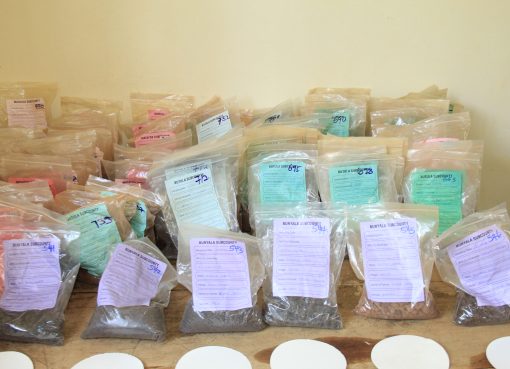Farmers in Garissa are counting losses amounting to millions of shillings caused by the recent floods that covered their farms and swept off their crops.
In most farms along the River Tana, the flood water has subsidised, leaving a trail of destruction, from their access roads to their water pumps and pipes to their farm beds, and every short plant in the farms that was covered by floods is now playing ground filled with sand.
Around 8 kilometres from Garissa Town, we visited the 280-acre Qahir farm, which is owned by a society of 56 members.
Together with the farmers, we had to walk for almost two kilometres to reach the farm because the access road from the Rahya solar power plant was completely destroyed by floods, and some of its sections are still covered with water.
Garane Sheikh, the Qahir farm chairperson, says that the farm was started in 1994 and is divided into two areas: 240 acres for farming and 40 acres for grazing purposes.
Sheikh, as he takes us around the farm, regrets that since its start, they have never experienced the same loss as the one caused by the recent rains.
“Since we started this farm in 1994, we have never experienced this kind of loss, especially where the floods have swept everything on our farm. As farmers, we are currently facing many challenges; the access roads to our farms are not accessible; they have become a river,” Sheikh said.
“The recurring droughts in our region had forced us to shift to farming because we lost our livestock every year. We have used these farms to earn our living and take our children to school, but now it seems we have to find other avenues,” he added.
Abdullahi Yusuf, a member of the society, said that they had a locally available market in Garissa town for their produce, which includes mangoes, lemons, paw paws, bananas, and water melons.
“During last year’s October–December rains, El Nino swept off our farms, and we got nothing. For the March–April season this year, we have experienced the same problems, and we are devastated by the loss of millions of shillings we have seen,” Yusuf said.
“We have lost 20 acres of banana plantations, 10 acres of lemons, 10 acres of paw paws, and our mango trees have also been affected,” he added.
Yusuf called on both the national and county governments to come up with a strategy to redirect the excess water in the Tana River to other areas in the county through the drilling of canals.
He said that with proper planning, instead of letting floods wreak havoc for residents and farmers, the water can be directed to dams and benefit people and livestock.
The farmers further want extra dams upstream of the Tana River, arguing that the current seven folk dams have not been enough to hold the water flowing in the river, leading to flooding in parts of Garissa, Tana River, and Lamu counties.
By Erick Kyalo





